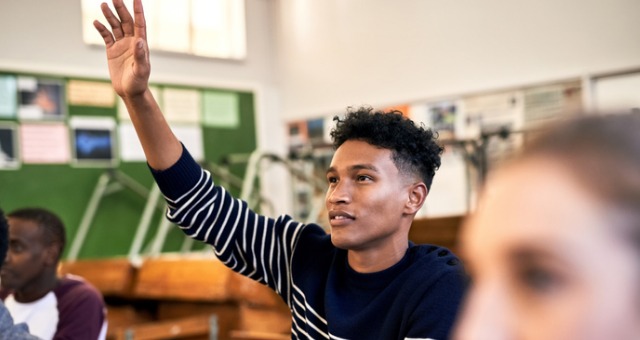“What do the readings have to do with class?” “Why do we even have to do the readings?”
After spending more than a decade supporting college faculty in teaching, I have heard students utter these statements numerous times. I often observe classes and conduct mid-course focus groups with students. It continues to surprise me that students regularly question how the readings connect to class. Certainly, instructors would not be assigning readings that had nothing to do with the course! Given how much we worry about students not doing the readings, why would we assign unrelated readings? Yet, frequently, in courses in different disciplines, I’ve heard this type of feedback from students, “We don’t understand the readings, they have nothing to do with what we talk about in class.”
To be clear, this isn’t an issue of simply not wanting to do the readings. Students do complain about overly technical readings or large amounts of assigned readings, but that’s not the issue here. Rather, this is about a disconnect with the content of the readings and what happens during course sessions. And it always comes as a surprise to me and the faculty member involved.
I have often pondered what is behind this student concern, especially because I typically visit the classrooms of very engaged and learning-centered faculty. I have wondered if our shift to active learning, where we no longer simply cover the readings in class, has inadvertently resulted in a lack of connection with the readings. We may use the readings to provide a baseline of content knowledge, and then use class time to apply concepts and ideas. But perhaps we are asking too much to expect that these connections will automatically occur?
While reading Tolman and Kremling’s book Why Students Resist Learning (2017), it occurred to me to view this sentiment from students as a signal of an underlying issue. While the students’ lack of connection with the readings might not be considered active resistance, is it a form of passively preserving themselves from doing the extra work of making these connections on their own. The fact that they keep this information from the instructor unless probed (thus the surprise effect), hints at a subtle form of resistance. We can view it as valuable feedback—it signals that there is something going on—that a disconnect exists.
It also occurred to me that this might be an example of our “expert blind spot” coming into play (Nickerson, 1999; Ambrose, et al., 2010). As experts in our discipline, we clearly see the connections between our activities and the content in our readings. We may assign readings that expand on our content, take it in new directions, provide historical background or an opposing view, and assume that our students see the big picture as we do. However, to our students, novices in the subject matter, this is all new information. The connections don’t automatically jump out to them. Perhaps in our well-intentioned focus on active learning in the classroom, we have lost some of the scaffolding needed to make these connections. Their confusion is a signal that we need to be extremely intentional, more than we might think is necessary, if we are to help student make these connections.
Here are a few ways to make clear connections between what’s in the readings and what happens in class:
- Reading reflections – Ask students to create an ongoing journal about the readings. What ideas most resonated with them? How do the ideas relate to the topic of each class, or to a previous class? How could they apply the concepts from the readings?
- Reading discussion leaders – Assign students on a rotating basis to lead a short discussion about the readings, or to be responsible for explicitly making connections to the readings throughout a class period or in an online discussion.
- Reading quizzes – If you use quizzes or entry tickets to ensure students do the reading, include questions that explicitly ask students to tie the concepts to what’s happening in class, or even tying together previous or future class sessions.
- Model the connections – Refer to the readings throughout your class as appropriate. Highlight key points or quotes and help students see how the literature supports what you are exploring in class.
What strategies do you use to best articulate and make these connections with your students?
References
Ambrose, S. A., Bridges, M. W., DiPietro, M., Lovett, M. C., & Norman, M. K. (2010). How learning works: Seven research-based principles for smart teaching. John Wiley & Sons.
Nickerson, R. S. (1999). How we know—and sometimes misjudge—what others know: Imputing one’s own knowledge to others. Psychological bulletin, 125(6), 737.
Tolman, A. O., Kremling, J., & Tagg, J. (2017). Why students resist learning: A practical model for understanding and helping students. Stylus Publishing.
Bridget Arend is affiliate faculty and the former executive director of the Office of Teaching and Learning at the University of Denver.






